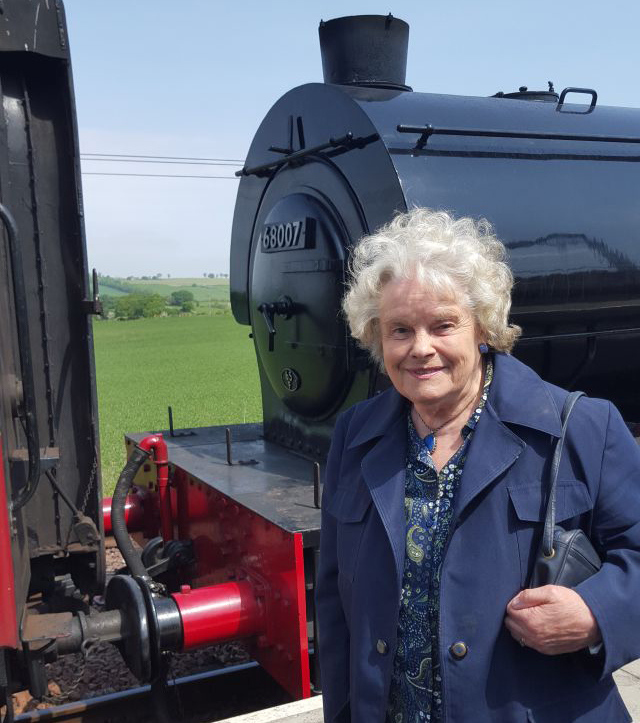The Bo'ness and Kinneil Railway

Out-going convener Mary Fleming at Manuel.
Since 1981 the Scottish Railway Preservation Society has been based at Bo'ness, from where it operates the four-mile Bo'ness and Kinneil Railway to Manuel and also railtours using traditional carriages that, picking up passengers from points in central Scotland, reach destinations ranging from Kyle of Lochalsh and Mallaig to Whitby and Lincoln. Although there was a railway to Bo'ness that carried coal and until 1956 passenger trains, everything that visitors now see has been brought in by volunteers from elsewhere : Bo'ness Station's overall roof was at Haymarket and its booking-office at Wormit, while the signalbox came from Garnqueen South Junction near Coatbridge, the signals from Coupar Angus and other places, and the building at the intermediate station of Birkhill was brought from Monifieth via the 1988 Glasgow Garden Festival. The line's steep climb through woodland gives what is nowadays an unusually industrially-dominated view of the impressively vast Grangemouth Oil Refinery, and while the locomotive often an ex-National Coal Board steam tank engine is running round its train at Manuel, passengers can stretch their legs and make comparisons with modern trains on the adjoining Edinburgh-Glasgow main line. Back at Bo'ness, by crossing the footbridge which came from Murthly one can pass the dock and more signals to reach the Museum of Scottish Railways, the largest collection of rolling-stock and other items in Britain outwith York, where exhibits include a Glasgow Subway car, the only Royal carriage built in Scotland and a Travelling Post Office. In addition to the collection of steam locomotives which include Gordon Highlander on loan from the Riverside Museum and Great War survivor Maude, other more modern motive power includes many diesel locomotives and two precursors of the trains that we use today. The Glasgow Blue Train may no longer be blue, but it is the last complete survivor of a type that from 1960 revolutionised rail travel in the West of Scotland, while the Swindon diesel railcar that until 1982 worked the Ayr route is the only surviving example anywhere of British Rail's first-generation longer-distance diesel multiple-unit trains.